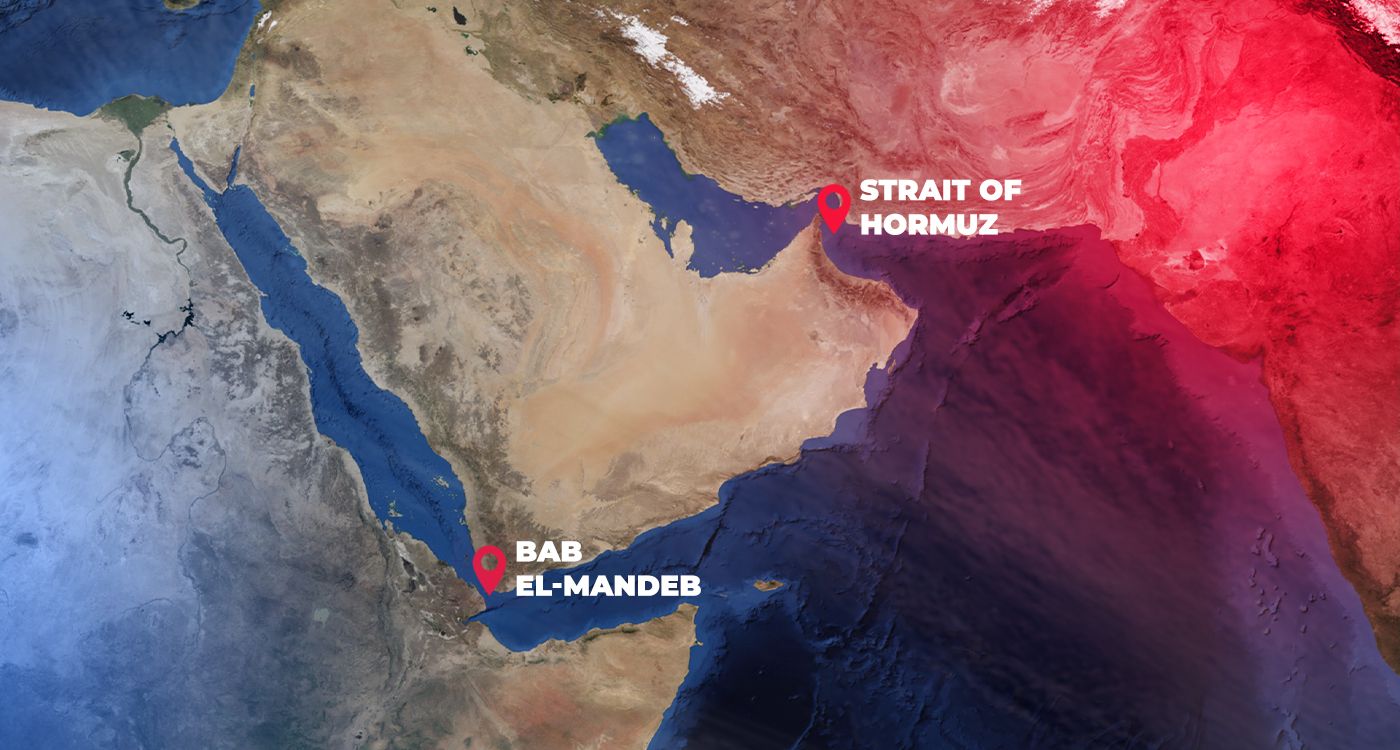
Iran may have to resort to a strategic tool: control of the Strait of Hormuz. According to several analyses, this tactic could be as devastating as a nuclear weapon.
However, unlike a nuclear weapon, whose use would bring catastrophic consequences for Iran itself, the threat of closing the Strait of Hormuz serves as a form of "asymmetric deterrence."
Iran can leverage this threat more discreetly, through provocations, limited actions, or threats of a blockade, "without crossing the line into total war."
Hormuz and Bab al-Mandeb
What would happen if Iran gained control of the two key chokepoints for international navigation and trade, as well as the two strategic corridors for energy resources: The Strait of Hormuz and Bab el-Mandeb, which are already monitored by its ally in Yemen, the Houthis?
These two straits constitute an interconnected logistics chain, forming part of the same maritime route. Oil and liquefied natural gas (LNG) extracted in the Persian Gulf first travel through the Strait of Hormuz, then through the Arabian Sea, before navigating Bab al-Mandeb to reach the Red Sea, the Suez Canal, and ultimately, Europe or other international destinations.
Any disruption in either of the two straits would directly impact global energy flows. For instance, a closure of the Strait of Hormuz would significantly reduce oil exports from the Middle East, while a shutdown of Bab al-Mandeb would affect deliveries to Europe, forcing ships to reroute around Africa via the Cape of Good Hope.
By selectively and temporarily closing both straits to certain countries, Tehran could trigger a financial shock in the West, prompting its remaining "friends" on the continent to reassess their positions. Such an action would also impact its key allies, including China, India, and Iraq. Meanwhile, the United States, despite its energy self-sufficiency, would face the repercussions of increased energy purchases by China from Russia, thereby strengthening Moscow's position in its war against Ukraine.
Foreign Trade
The Strait of Hormuz, located between the Persian Gulf and the Gulf of Oman, is a crucial exit point for exporting oil from Gulf countries such as Saudi Arabia, Iran, Kuwait, and Iraq. Approximately 20% of the world's oil production flows through it daily.
Moreover, around 9% of global maritime trade transits through Bab al-Mandeb, making it one of the main transit points for goods flowing between Europe, Asia, and Africa.
In this context, daily oil traffic through the strait ranges from 3.3 to 4.8 million barrels, primarily coming from the Gulf and destined for Europe and North America. This constitutes a substantial share of the global oil trade.
In terms of ship traffic, thousands of ships pass through Bab al-Mandeb each year, especially oil tankers, container ships, and cargo vessels. Although the exact figure fluctuates, it is estimated that over 25,000 ships navigate the strait annually.




Comments